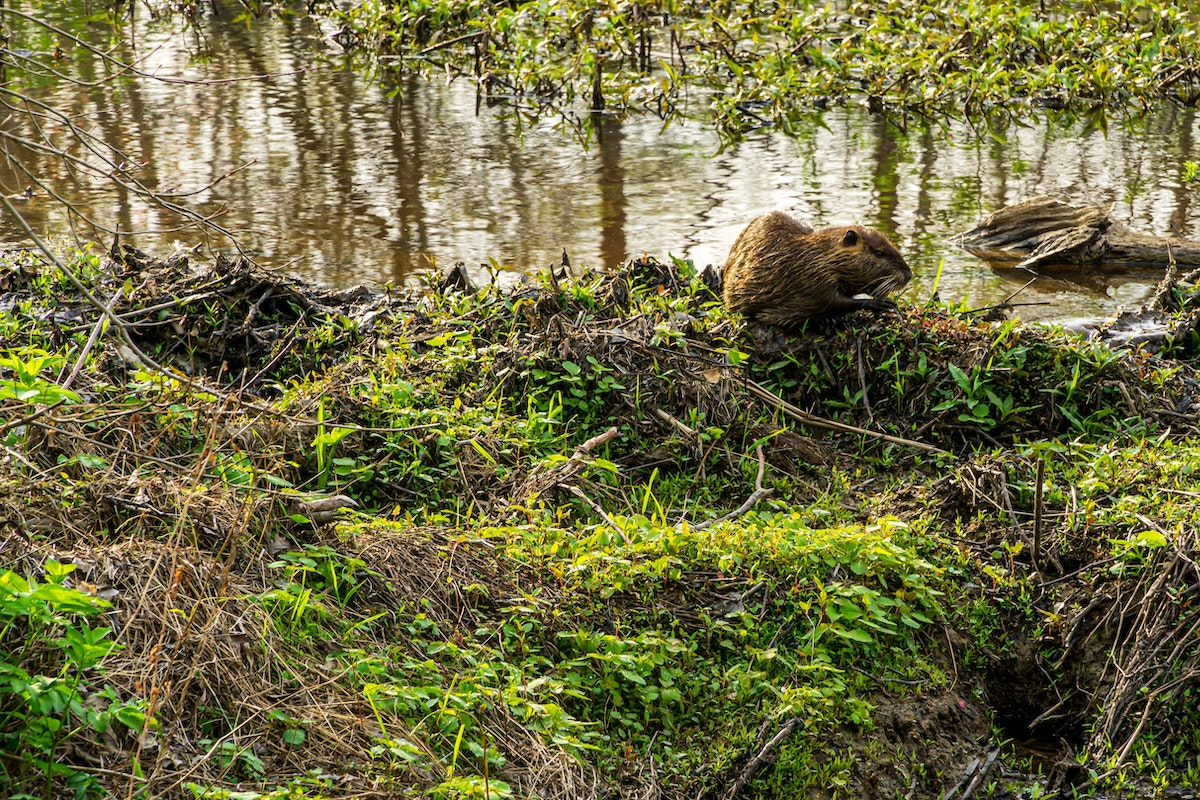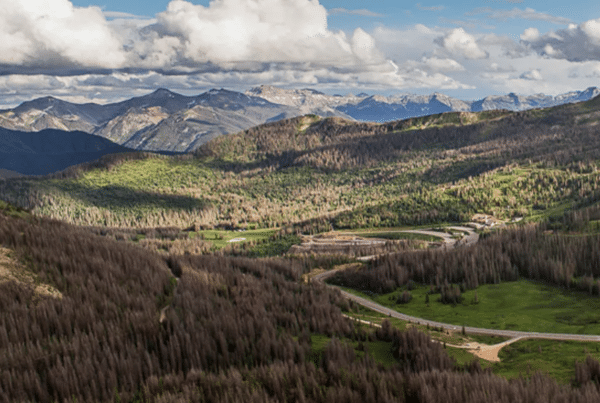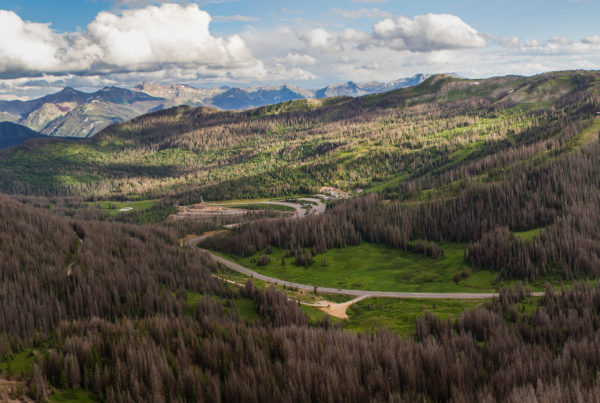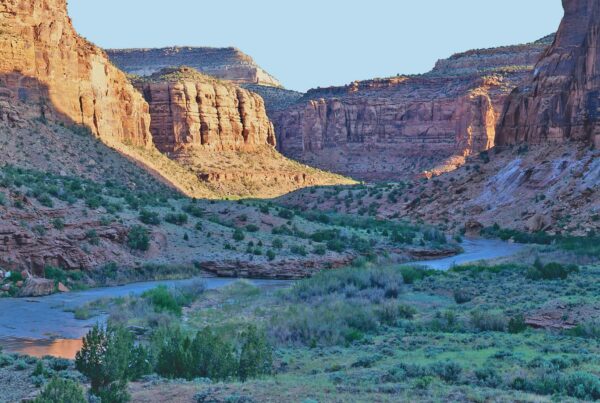Reimagining our Rivers with Beavers
Close your eyes and imagine you are sitting next to a stream. What do you see? What do you hear? You may be imagining noises associated with a babbling brook with water quickly moving down-gradient. Perhaps you see a bright green strip of vegetation next to the stream that transitions to sagebrush and pine as the ground rises away from the streambed. Do you see wildlife? Do you see beavers?
Before European settlement of North America, it is estimated that the population of these landscape engineers was somewhere between 60 – 400 million. Numbers dramatically declined throughout the 1700-1800s as demands from the fur trade put a high price on beaver pelts, and decreased the population to just 100,000 by the 1900s. As new styles entered the scene in the late 1800s, demand for beaver pelts declined and their populations slowly began to rise throughout Colorado. Rebounding was difficult, however, as headwater landscapes were altered with a framework of development that created relics that we still see today. Mining, logging, and agricultural practices encroached on beaver habitat, diverting and polluting streams, and removing materials required to build their lodges and dams.
The Legacy of the Beaver
The legacy of beaver eradication can be viewed in riverscapes throughout the West. A riverscape is the part of the landscape where water is connected to its floodplain and adjacent habitat. The functioning riverscape is naturally a messy system – it is intended to flood, sprawl across valley floors, contain braided channels and vegetated islands, and support a range of stream depths and velocities. Is this the stream you imagined earlier? It probably isn’t.
Trapping and habitat alteration have impacted the extent to which this keystone species has been able to operate throughout the landscape as watershed engineers. The modern view of a headwater stream is one that has incised into its channel, disconnected from the floodplain. Instead of sprawling, messy, and dynamic systems, many headwater streams are now narrow, and quickly move downstream without biological infrastructure in place to slow their flow and promote natural flooding processes. By removing the biological process that promotes flooding, many streams throughout the west have been experiencing a decline in their ability to maintain saturated soils, leading to a loss of functioning riparian and wetland habitat. In fact, the benefits of supporting healthy, functioning riverscapes is immeasurable considering the challenges our ecosystems are facing today.
Promoting natural flooding processes can support the re-emergence of abandoned wetlands, which can promote wildfire resilience and aquifer recharge, reduce storm flooding damage, sequester carbon, sustain soil moisture, filter sediment, and excess nutrients, increase biodiversity, and provide habitat for critical terrestrial, aquatic, and plant species.
Low-Tech Process-Based Restoration
Restoration practitioners have taken notes from the beaver and are working to restore riverscapes through low-tech process-based restoration (LTPBR) techniques. These methods utilize low-cost structural additions to riverscapes intended to mimic the functions that beaver dams and large woody structures provide, and promote specific processes. The beaver dam analog (BDA) and post assisted log structure (PAL) are common low-tech tools installed by practitioners to mimic the functions that beaver dams and large fallen trees once provided in areas that are now starved of wood input, or lack the presence of beavers. Restoration projects utilizing LTPBR methods have been gaining traction in some areas of Colorado. However, more work needs to be done to assess the suitability of these methods for streams throughout the Animas River watershed.
Sara has been dedicated to learning more about the role of beavers in our watersheds, the history of riverscape degradation, and emerging tools to rehabilitate altered systems. Through partnership efforts, she is working to create opportunities for the community, as well as land and water managers, to learn about the philosophy, benefits, challenges, and application of LTPBR techniques. To address the challenges that our Western watersheds are facing, we all must work together to sustain a brighter future by restoring the functions of the furry past.




